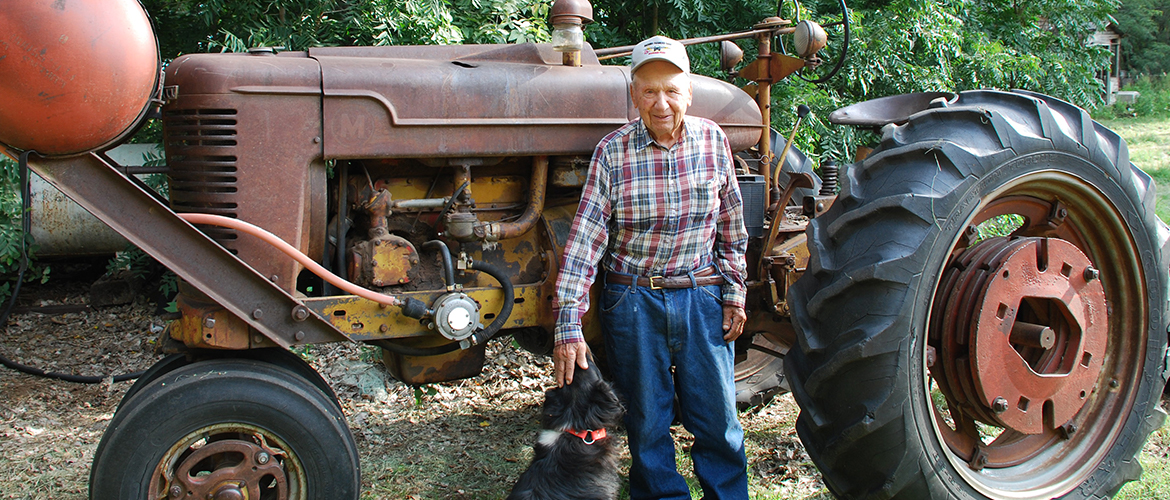
A Century of Experiences: In Their Own Words
Monday, February 19, 2018
Oklahoma centenarians enrich the state’s story with oral histories
By Bonnie Cain-Wood
The “Oklahoma 100 Years of Life” oral history project is using the collected voices of 111 centenarians in the state to add substance to the often glossed-over big pictures of history.
The work that continues on the project also exemplifies how faculty at OSU collaborate to fulfill each arm of the land-grant mission: research, education and outreach.
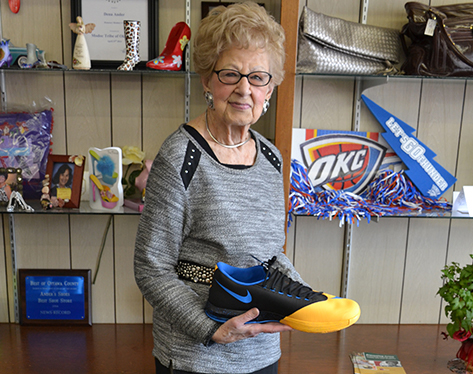
Tanya Finchum, of the OSU Library’s Oklahoma Oral History Research Program, and Alex Bishop, with the OSU Department of Human Development and Family Science, spearheaded the project that collected the stories of 111 Oklahoman centenarians.
Many contributions and perspectives are left undocumented in written versions of history. Oral history allows researchers to fill gaps by interviewing individuals about their firsthand experiences and making that material available to researchers and the public.
Finchum, whose academic background is in gerontology, was seeking a collaborator interested in using oral history to study aging. She met Bishop through a guest lecture for his winter intersession course, and he suggested looking at centenarians, his primary population of interest.
“I wanted to know about life at 100, but I also wanted to know about their childhood because that tells us a lot about living in Oklahoma at the time,” Finchum says. “What was the state like in the ’20s and ’30s, and how did the Great Depression impact the rest of their lives?”
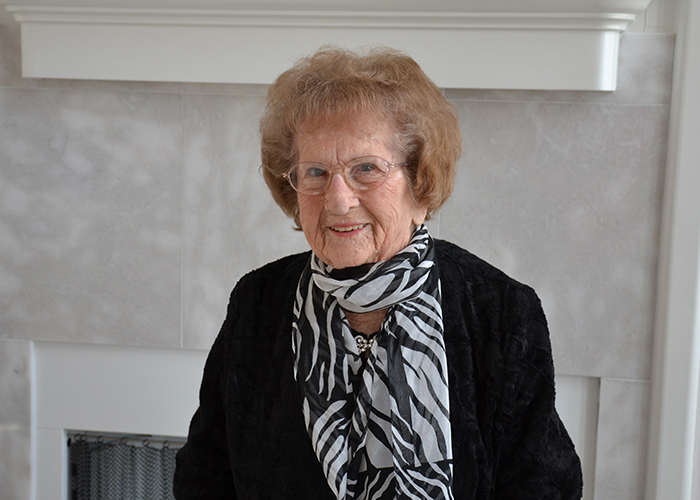
Initially, they aimed to collect 25 stories. But as the project progressed, the number of potential narrators grew. Bishop’s role as a gerontology faculty member made him well positioned to locate centenarians in the state. Bishop and his research assistants took a diverse approach to finding subjects. Working with county Extension Community Educators, scouring media for birthday celebrations and even searching obituaries for mentions of surviving centenarians offered a growing list of leads.
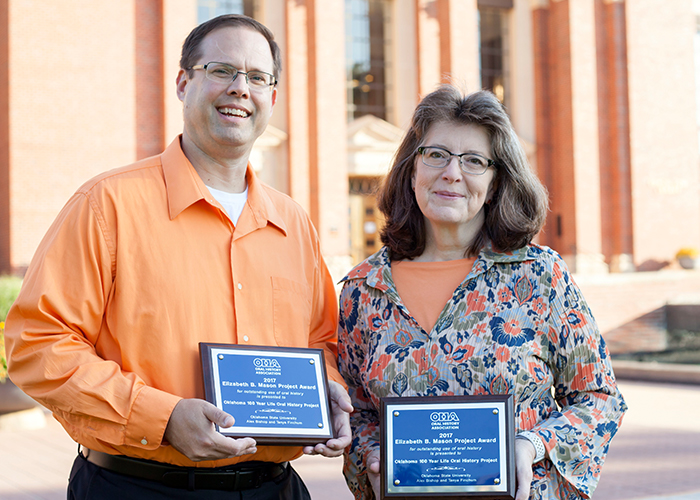
“Think about it: If a person dies in their 80s, and their obituary mentions they are survived by a parent, that parent is likely to be near 100 years old,” Bishop says.
A new target of 100 subjects was set. As the researchers closed in on that, Bishop shifted the focus to less-visited areas of Oklahoma and sought out varying demographic attributes to round out the composition of narrators. As a result, the collection is richer and more inclusive.
In addition to gathering robust qualitative data about the lives of people living to the age of 100 and beyond, the collaboration explored the impact of how sharing a life story affected their satisfaction with life. Bishop focused on pre- and post-psychometric assessments of subjective well-being while Finchum led the qualitative oral history interviews.
The collection holds a wealth of data, and Bishop wanted to bring that into his classrooms. He began to incorporate interviews from the project into his Adulthood and Aging course, asking students to select a centenarian from the collection and write a life analysis paper. Bishop later went on to use the collection in a graduate-level online course.
"In October 2017, "Oklahoma 100 Years of life" was recognized by the American Oral History association with the Elizabeth B Manson Award that recognizes and outstanding oral history project of noteworthy scholarly and social value."
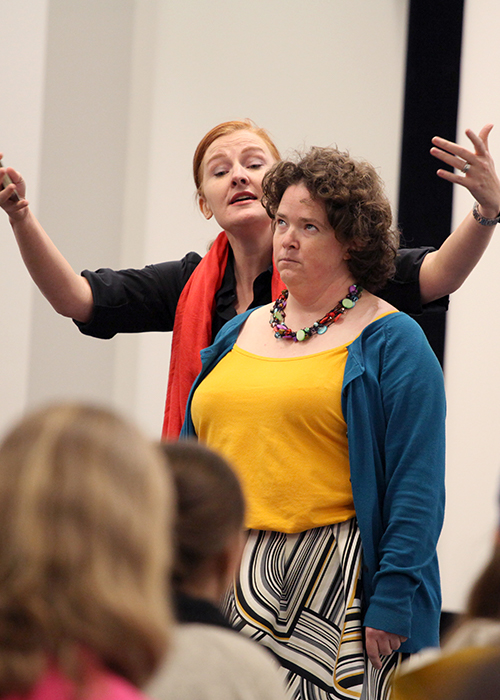
Assignments such as these aren’t unusual in gerontology studies, but the team was interested in taking the classroom component in an innovative and humanities-focused direction. A third collaborator was added: Dr. Julie Pearson-Little Thunder, a visiting assistant professor with the OOHRP, brought her academic and professional theater background to the project.
Using the oral history collection as source material, Julie Pearson-Little Thunder wrote an original theatrical production, Centenarians, featuring five of the interviewed centenarians as characters. Excerpts from the interviews were woven into a one-act play. The fictional characters of Luck and the Writer helped piece the separate narratives into a cohesive story that explored common themes. This was the fourth oral history-based production Pearson-Little Thunder has penned.
Pearson-Little Thunder then brought her directorial experience into Bishop’s classroom. She led students through acting exercises designed to increase awareness of what it might be like to live to 100 and beyond. One goal of this interactive learning activity was to answer the question: What does it mean to grow old?
“I think people have an experience with live performance that they don't get in any other way,” Pearson-Little Thunder says. “Elements of it are equivalent to the experience you have when you're interviewing somebody because there's a dynamic interchange.”
The success of the dramaturgy class assignment aided Bishop in obtaining a small grant that supported the outreach element of the project. Centenarians was brought out into the community with two public performances featuring professional actors. Pearson-Little Thunder directed the productions, and the reach of the project expanded into another academic department with the addition of Maria Beach, a faculty member from the OSU Department of Theatre, serving as assistant director.
“Performance is a great way to get oral histories out to a community, and it's an especially great way to get people interested in reading these oral histories and invested in them,” Pearson-Little Thunder says.
The performances ultimately provided another research element. Bishop conducted focus groups with the performers and surveyed the audiences to examine if attitudes and perceptions of aging and the aged changed after viewing the play.
“The pre- and post-audience assessments looked at age beliefs and empathy,” Bishop says. “Early results indicate that the play audiences showed increased empathy and more positive and realistic aging beliefs.”
A recording of Pearson-Little Thunder’s production is now available on OStateTV. Search the channel for Centenarians.
In October 2017, “Oklahoma 100 Years of Life” was recognized by the American Oral History Association with the Elizabeth B. Mason Award that recognizes an outstanding oral history project of noteworthy scholarly and social value.
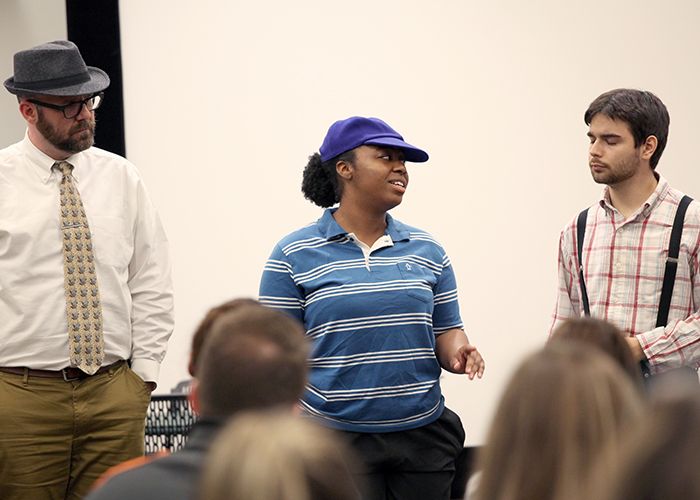
In a letter of support for the nomination, Sissy Osteen, head of Human Development and Family Sciences, wrote, “This project is a testament of collaboration between social-behavioral experts, library scientists, and humanities scholars who have aimed to bridge methodological approaches. Outcomes exemplify how meaningful research collaborations are vital to worthy oral history projects.”
Bishop has presented and published his preliminary findings and is excited about his continued work with the collection. Finchum and Pearson-Little Thunder have also presented on the project, both in-state and nationally.
“We’re just beginning to scratch the surface,” he says. “We haven’t even finished our initial analyses.”
Bishop is confident a number of interesting research angles awaits in the collection of data. He would like to follow the subjects to see if there are meaningful connections between themes in their interviews and the subjects’ ultimate lifespans.
Finchum and Bishop spent three years collecting the interviews and related data. The staff of the Oklahoma Oral History Research Program has transcribed each interview; the texts, recordings and some photographs are available online. Find the “Oklahoma 100 Years of Life” oral history project at library.okstate.edu/oralhistory/digital/100. To learn more about the OOHRP call 405-744-7685, email liboh@okstate.edu, or visit library.okstate.edu/oralhistory/.
